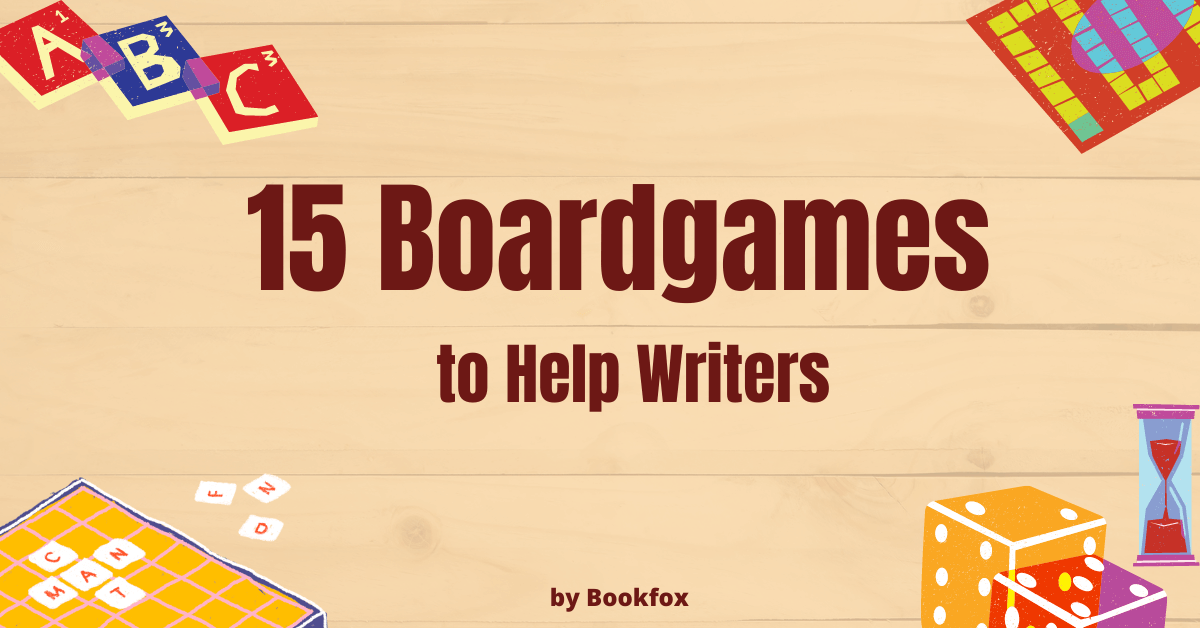
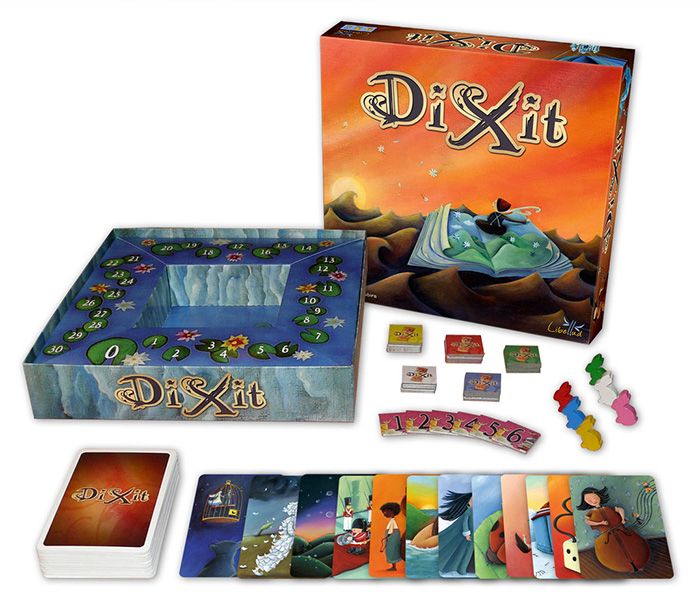
How to play:
1. The storyteller picks a card from their deck and describes it any way they want to.
2. The other players choose a card that they think also fits that description.
3. The cards are turned over and the players must pick the card that they believe to be the storyteller’s.
How it helps writers:
This game helps writers practice their descriptive skills. You’ll use figurative devices instead of relying on concrete details since you have to find a way to hint at the image rather than plainly describing it.
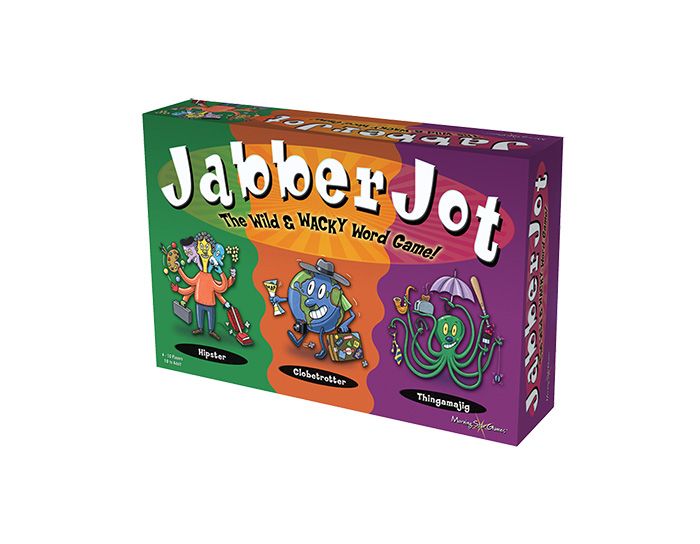
How to play:
1. Each player must invent a story based on three pictures, three words, and a theme.
2. Once time has run out, one player reads all the stories out loud and selects their favorite one.
How it helps writers:
90 seconds to write a short story? What a trip! Writing under pressure will develop the crucial writing skill of working under deadline. You’ll have to think quick and use humor to win the round.
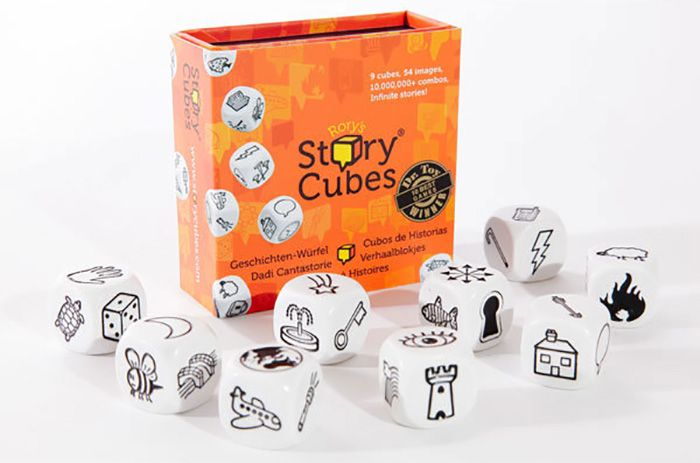
How to play:
1. Each player must roll the nine cubes and use all nine icons to tell a story.
2. You must begin by saying “Once upon a time,” but after that the story that follows is completely up to you.
How it helps writers:
This game is great if you find yourself stuck with a bit of writer’s block as it allows you to really engage with your imagination. Try using the cubes to help come up with fun new characters or adventurous new settings!
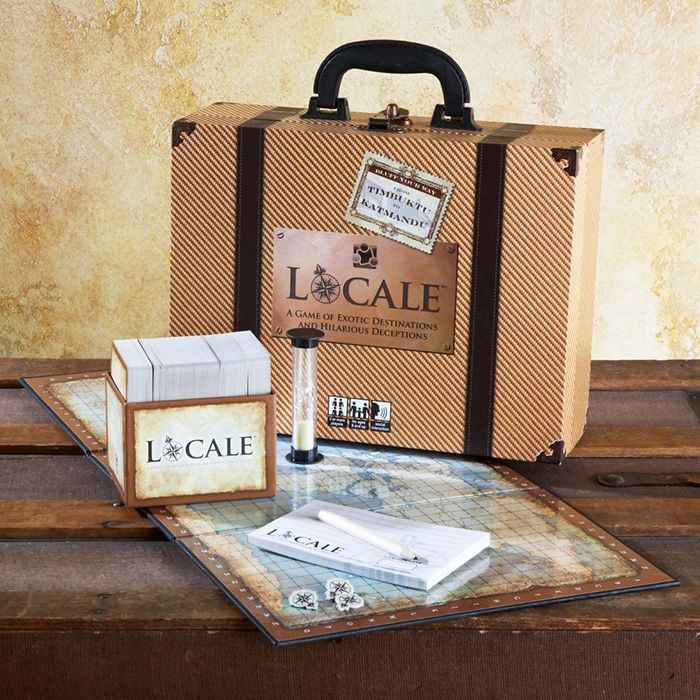
How to play:
1. Players must create a story by describing and explaining as much as they can about a location.
2. Players win points for having the most believable story and fooling the other players.
How it helps Writers:
This game helps writers improve their description and imagery skills by forcing them to rely heavily on the classic “show don’t tell” rule. You will have to use figurative language and sensory details in your story to win the game.
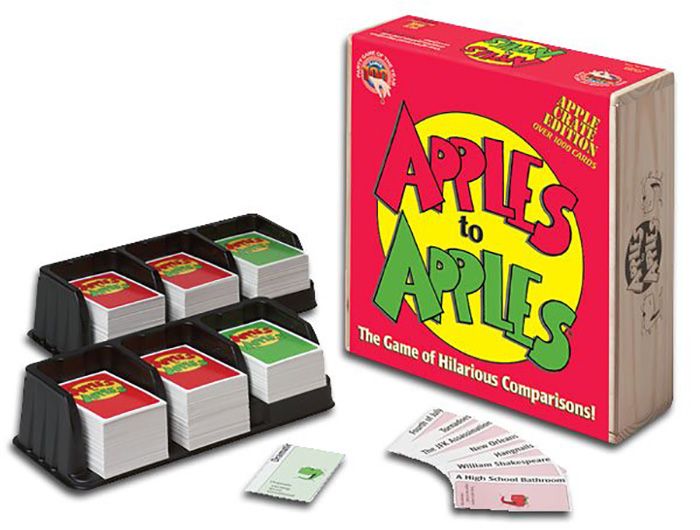
How to play:
1. Instead of playing the normal way, substitute the red apple cards with a notepad and write down your own original response.
2.This response can be anything you want, but one way to play is to write a one sentence story that responds to the description word given by the green apple card.
How it helps writers:
This is a great way to practice short story and flash fiction writing! The time limit forces you to write a story that responds to the description word while still being entertaining enough to win. It’ll really help you learn how to make every word count; an essential skill in short story and flash fiction writing.
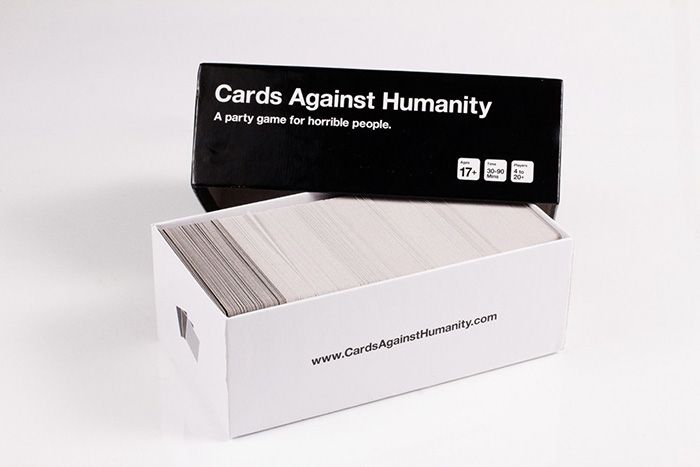
How to play:
1. Instead of using the original game, buy blank cards and create your own version!
2. You can create your own cards that follow the same basic themes as Cards Against Humanity, or you can start from scratch.
3. One idea is to completely start from scratch and, on blank cards, write a one sentence story with some vital components missing and then either create response cards that will fill in the blanks, or allow players to write their own responses as you play.
How it helps writers:
You might want to avoid playing this one with the whole family… but regardless of how you choose to customize this game, creating your own cards will help you practice using comedic devices, plot writing skills, and coming up with interesting situations that you might not normally think of!
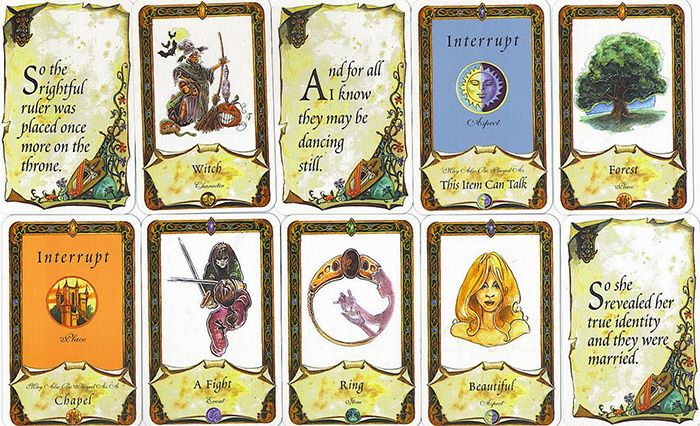
Once Upon a Time: The Storytelling Card Game
How to play:
1. The storyteller will tell a story using the elements on their cards and try to finish the story with their ending.
2. Other players must try to interrupt the storyteller and take over the story.
3. The player who manages to use all of their cards and end the story wins the game.
How it helps writers:
Use this game to really put your plot writing skills to the test. While trying to steal the story away from other players, attempt to make use of flashbacks, plot twists, backstories, and maybe even try to create stories within the story.

How to play:
1. Each player takes cards from four separate decks in order to form a story.
2. Each player will continue to take and discard cards each round until they are happy with their story.
3. At the end of the game, each player has one minute to pitch their story. The player with the most votes, wins.
How it helps writers:
Whether you find yourself stuck with trying to come up with a decent pitch for your creative projects or you’re having trouble writing the introductory hook for your novel, this game will definitely help you practice your pitching abilities and refine your hook making skills.

How to play:
1. This game is a combination of storytelling and town building where the main objective is to use all aspects of the game to help your characters create the most successful village they can make.
2. During the game you’ll be using an encounter book that dictates what happens to characters during the game. You will be given a situation by the book but you will be able to choose the way your character responds to the situation.
How it helps writers:
This game will truly take you on an incredible journey and is a great way to experience different plot developments. But, if you’ve played the game enough and want to experience a new story line or just want to push yourself and practice plot development, why not write your own encounter book? You certainly don’t have to make it as long or intricate, but creating your own storyline for the game is a fun way to get creative!
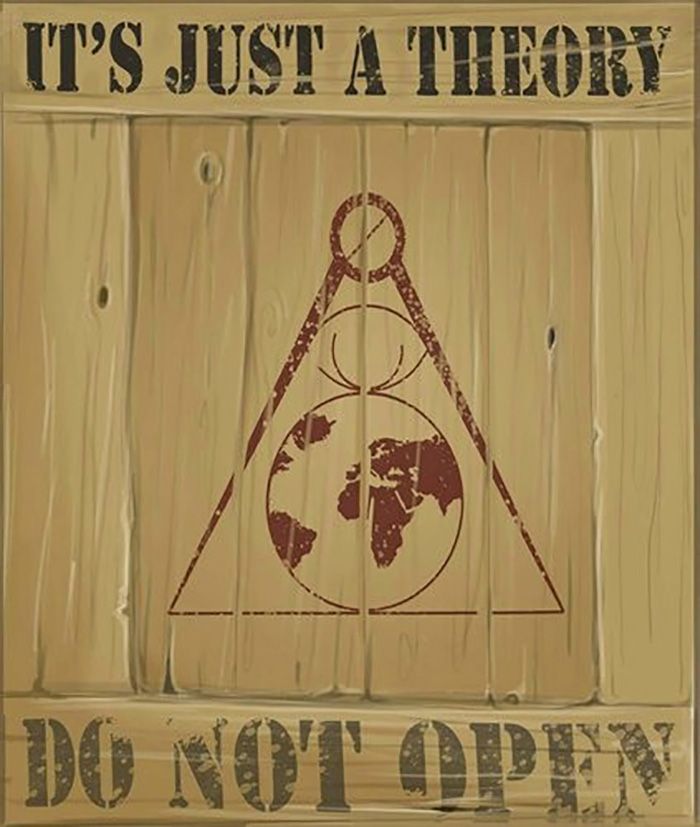
How to play:
1. One player is the lead conspiracy theorist and will start the game by using their cards to come up with a conspiracy theory.
2. The other players must interrupt the lead theorist’s theory in order to take it over and challenge the theory.
3. The player that guides the theory towards his or her own ending and puts down their propaganda card first wins the round. The player who has ended theories as well as put down the most cards wins the game.
How it helps writers:
This game, like Once Upon a Time, helps players practice story structuring as well as plot writing! While trying to shift a theory away from another player, you will have to invent plot twists, backstories, events, and situations that you can use and further develop in your own writing.
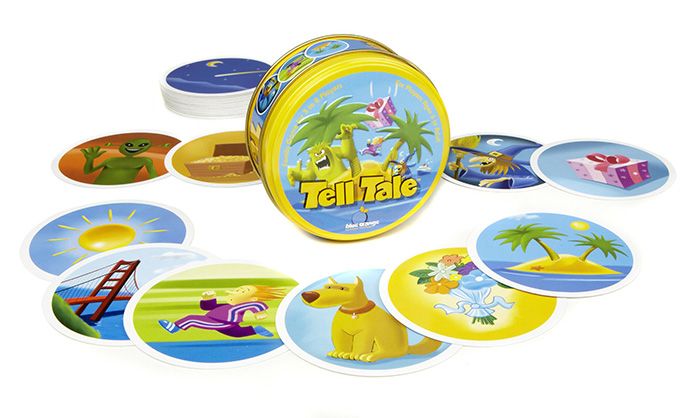
How to play:
1. There are four ways to play this game, but the one we will be focusing on is the story method.
2. Each player is dealt five cards face up and must then tell a short story using the five cards that they are dealt in the order that they appear.
3. Once all the players have told their story, everyone votes for their favorite and the player with the most votes wins.
How it helps writers:
This game is fun for the whole family and great for introducing children to story structuring skills! This game helps players of all ages with character development, and making use of plot devices.
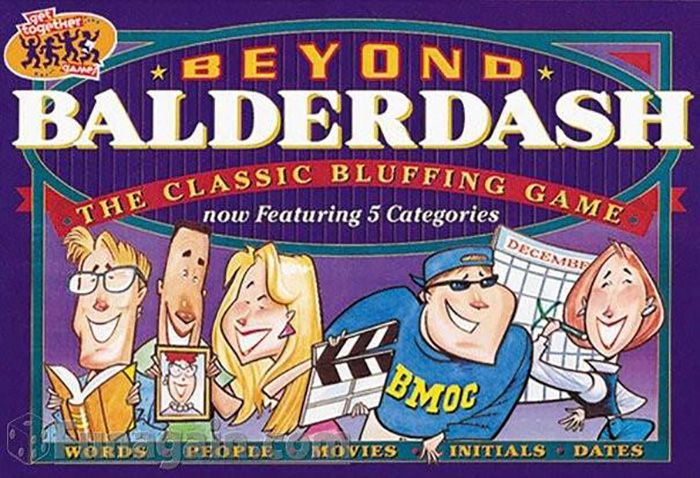
How to play:
1. While Balderdash is a game where you try to fool the other players into believing your made up definition for unknown words, Beyond Balderdash contains new categories: movies, dates, people, and initials.
2. The objective of the game is to write your own answer for the category chosen by the leader and to fool the other players into picking your response as the true answer.
How it helps writers:
The new categories are what make this a fantastic writing exercise as well as a funny and entertaining game. Beyond Balderdash is great for helping players refine their plot development skills, character building, backstories, and help with creating situations that could be used in their own creative projects.
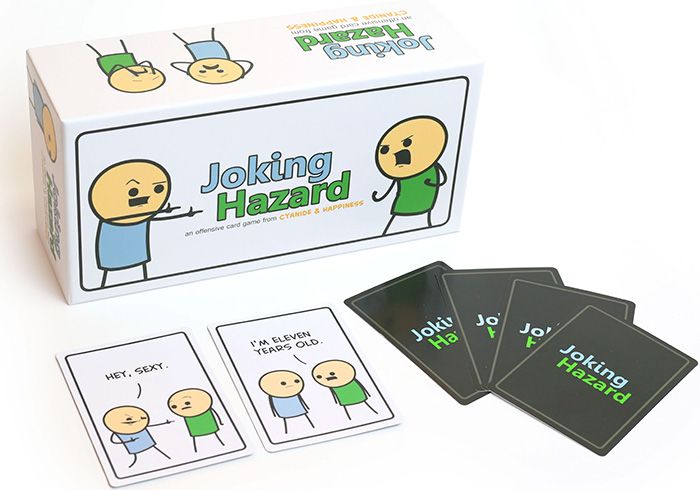
How to play:
1. Two cards are placed face up in order to create the start of a three panel comic strip.
2. Each player must put down a third card to complete the punchline of the comic strip, the judge will then pick a winner.
3. If you want a bit more of a challenge, why not try drawing and writing your own final card to finish the comic strip’s punchline?
How it helps writers:
This game is loads of fun with a similar tone to Cards Against Humanity (I wouldn’t recommend bringing this out at a family dinner unless, of course, you think your family would enjoy it!) and is great if you want to improve your comedic writing as it forces you to make use of any and all comedic devices. It also allows you practice using different comedic styles. Try making use of dry humor or maybe even play around with a slapstick situation.

The Book Game
How to play:
1. In order to play this game you will need access to either your home library or you can just go on the book section of amazon.com in order to find books to use for the game, but make sure you are able to read the first sentence of the book if you are on amazon.
2. The moderator must find a book and then read out the title and blurb of the book to the other players.
3. The players will then come up with what they think the first sentence of the book would be, and write it down on a piece of paper with their name on it.
4. Players will then vote on which sentence they think belongs to the book. Players get points for each vote they get.
How it helps:
This game will leave the whole family crying with laughter and is not only a great exercise in writing introductory hooks and opening sentences for stories, but also a great way to explore different writing styles that you might not normally use. Don’t be afraid to really go for it and branch out.
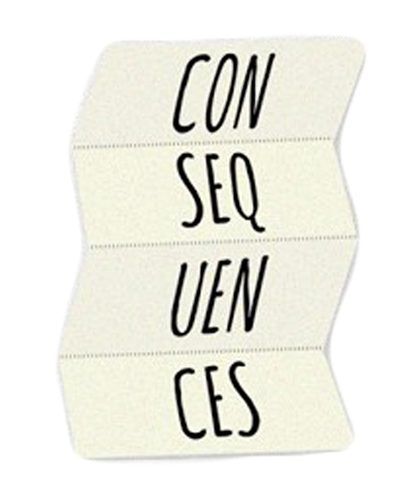
Consequences
How to play:
1. You will need at least three players and a piece of paper each. Each player starts off by writing down a man’s name, and then folds the paper so that the name cannot be seen and then passes it to the next player.
2. The next player will then write down “met” and then a woman’s name, and once again folds the paper and passes it along.
3. The next step is to write “in” or “at” and the location where these two characters meet and, again, fold and pass.
4. Next write a line of dialog starting with “He said,” fold and pass.
5. Write another line of dialog, this time starting with “she said,” fold and pass.
6. To end it the player will then write a consequence: a result of everything that was said and done, for example “and they lived happily ever after,” or “so she left him trapped there (the location they met) and walked away never to be seen again”. The paper will be passed once more before each player takes turns to read the stories out loud. There is no need for a winner in this game but feel free to vote for your favorite story!
How it helps writers:
This game is a fun and engaging way to introduce children to story telling techniques as well as to help players of all ages with creating dialog. It’s also a really entertaining way to practice and examine different ways of incorporating plot twists into a story since you never know what another player is going to write!

One thought on “15 Boardgames to Help Writers”
Great blog!
I loved reading your blog and have also shared with others for reading. Keep sharing such blogs in future too.